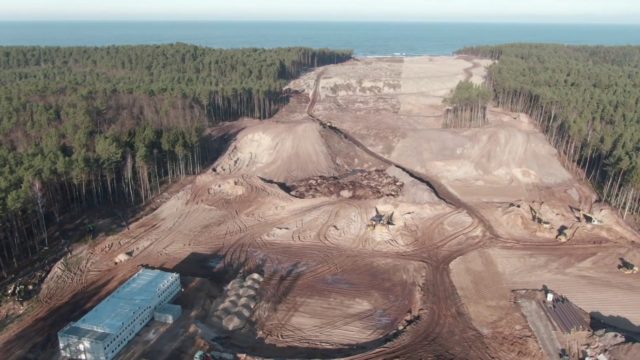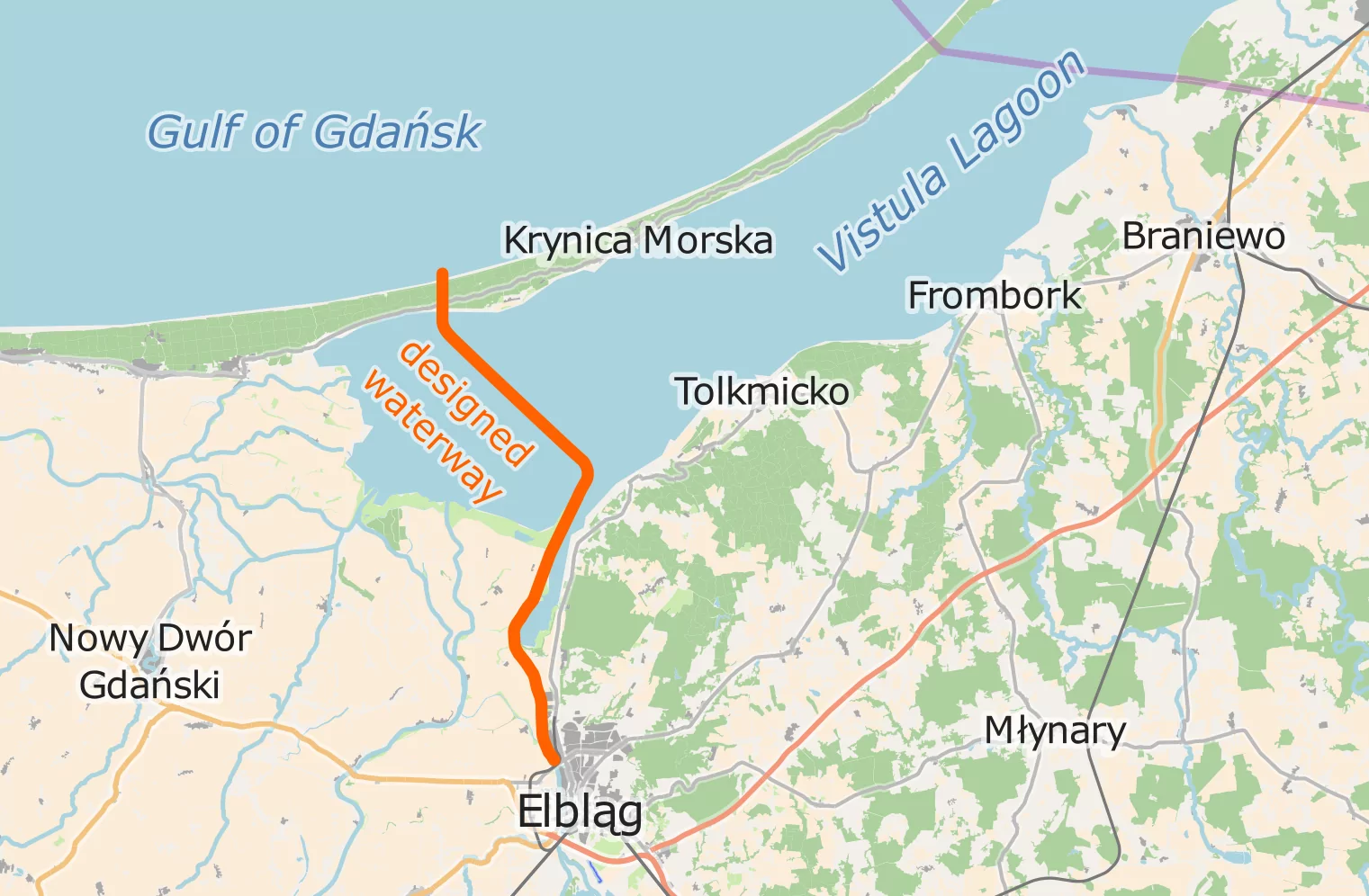
Moscow Views Construction of Canal Across Vistula Spit as Threat to Kaliningrad
Publication: Eurasia Daily Monitor Volume: 17 Issue: 92
By:

The Russian authorities and some environmental groups in Poland and Germany have opposed the digging of a canal across the southern, Polish portion of the Vistula Spit since the idea was first proposed in 2004. But now the project, slated to be complete by 2022, is moving into high gear. Workers have finished clearing the ground cover and begun digging the canal itself. Meanwhile, Moscow commentators are shifting from complaints about its supposed environmental impact to suggestions that the only reason it is being built is to give North Atlantic Treaty Organization (NATO) warships access to Kaliningrad Bay (Vistula Lagoon) without having to first pass close by the Russian military facilities at Baltiysk. Consequently, they are arguing that this canal presents a direct threat to the security of Kaliningrad and the Russian Federation as a whole.
Writing for the online portal Rhythm of Eurasia, Moscow security affairs commentator Fyodor Koloskov argues that there is no economic justification for the project, that it is environmentally harmful, and that there has not been a single case in which Baltiysk has blocked the passage of a Polish ship. Instead, he says, the whole project reflects Polish “paranoia” about Russia and a desire by Warsaw and its NATO allies to gain access to the waters adjoining Kaliningrad in order to threaten or even attack that Russian region from the sea or by landing marines (Rhythm of Eurasia, June 20).
For all these reasons, the commentator continues, Moscow still hopes to kill the project by mobilizing opposition among environmentalists in Poland and Europe and by supporting the opposition to the Polish government. That government remains totally committed to the construction of the canal, he points out; but many in the opposition say the project is too expensive, will harm a resort area without bringing economic benefits to northeastern Poland, and will help NATO but not Poland. Koloskov’s words thus suggest the direction Russian propaganda and other actions will take as Moscow hopes to slow down or end the construction of the canal.

The Vistula Spit (which Russians refer to as the Baltic Spit) is 65 kilometers long and has a width varying from 300 meters to 9 kilometers. The northern 35 kilometers belong to the Russian Federation; the southern 30 to Poland. But at present, the only entrance to the brackish-water lagoon behind this thin ribbon of land passes near its northernmost point and is guarded by the Russian military base at Baltiysk. At the same time, several small delta branches of the Vistula River empty into the Polish segment, something that could be increasingly important if Poland, Belarus and Ukraine develop their hoped-for north-south E40 waterway, whose northern end is the nearby mouth of the Vistula (see EDM, April 28, May 4, 13).

According to Koloskov, the Vistula Spit has been a popular tourist destination for Poles, something he falsely asserts they will lose if the canal is built and they are excluded from visiting. At the same time, he points out, environmentalists are concerned that a new canal will lead to the salinization of the brackish lagoon and destroy its unique habit. To highlight and possibly exploit such concerns, Moscow has already launched a propaganda effort about the need to protect the environment there and even announced plans to build a national park in the Russian segment of the spit (Rhythm of Eurasia, June 20).
Passions about the project are said to be running high in Poland. The current leadership in Warsaw is all for it, but some local and regional officials have come out against it, Koloskov says (Rhythm of Eurasia, June 20). Some Poles view all opponents of the canal as “agents of Moscow,” and that makes any discussion of the issue more highly charged than might otherwise be the case, at least from the Russian perspective (Tvoi54.ru, July 25, 2019; Rubaltic, June 1, 2020).
Polish officials say that the nearby city of Elbląg and the surrounding areas need their own outlet to the Baltic Sea, especially as traffic on the Vistula increases. However, Russian observers like Koloskov argue that the real reason Warsaw is pressing ahead is in deference to its NATO partners’ desire to gain access to the territorial waters off Russia’s Kaliningrad Oblast without having to pass by Baltiysk. The Rhythm of Eurasia writer says that the Russian base at the only natural entrance to the lagoon has never and would never seek to block Polish commercial shipping. Yet, Poles have their doubts about whether that would be true in the event of a crisis. Nevertheless, Koloskov contends, the Baltiysk military outpost is not about to allow NATO warships into this small body of water, which explains the West’s interest in a new canal (Rhythm of Eurasia, June 20).
Poland’s military and political leaders have not denied that the canal project has a security dimension; although, unlike Russian writers, the Poles do not suggest it is the only or main reason behind moving ahead with the project (Polityka.pl, June 2). Koloskov, in particular, argues that the canal “serves a single purpose—supporting an unexpected strike by NATO […] against the Russian naval base at Baltysk” (Rhythm of Eurasia, June 20). Because that is the Russian perspective and because construction of the canal across the Vistula Spit has begun to speed up (Seanews.ru, April 24), it is likely to become an issue increasingly wrapped up with the much-talked-about “Suwałki Corridor.” Perhaps the only thing that may still derail the Vistula Spit canal is a victory by the Polish opposition in the coming elections and their potential decision to scale back or outright cancel the over-budget project (Gazeta Wyborcza, February 26).



